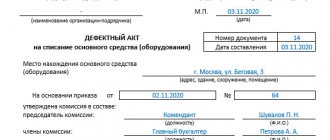When people interact with each other and with the outside world, situations often arise in which damage to property belonging to someone else occurs.
These situations must be resolved at the legislative level, since citizens are not always able to agree on a solution to the conflict on their own. For this purpose, the concepts of damage and destruction of property were introduced. Dear readers! To solve your specific problem, call the hotline or visit the website. It's free.
8 (800) 350-31-84
The essence of the crime
Vandalism is the desecration of structures and buildings, as well as deliberate damage to property and public transport.
The object of the crime is public order. The actions of a person found guilty of vandalism offend public morals. The subject of the crime is a capable person who is fourteen years old. The subjective side is considered to be direct intent. This means that damage to public property that was entirely due to negligence or due to certain circumstances does not fall under the definition of vandalism. As a result, the person who committed them cannot be held responsible for his actions in accordance with Art. 214 of the Criminal Code of the Russian Federation.
Desecration means disfigurement, the application of obscene drawings and words. The category of structures includes all buildings that are used to support people’s livelihoods: transport stops, bridges, underground passages, etc. The category of buildings includes all buildings in which people are located.
Damage to public property includes the following actions:
- Breaking windows in entrances, transport, public institutions, etc.
- Deformation that makes it impossible to operate an object, for example damage to a public transport stop.
- Arson under the Criminal Code of the Russian Federation, which led to damage to property. For example, the scorch of the contents of a garbage can led to the complete unsuitability of several nearby containers, etc.
A crime is considered committed upon the fact of the act. Whether the property was partially damaged or completely destroyed, the actions of the attacker still fall under Art. 214 of the Criminal Code of the Russian Federation. The amount of damage caused affects only the punishment.
Do not fall under Art. 214 of the Criminal Code of the Russian Federation, actions when damage to property was not designed for public reaction, or it is not used by society. For example, an inscription written on the wall of an abandoned building or a drawing that does not contradict moral standards on any wall does not fall under the definition of vandalism.
Difference between destruction, damage and damage to property
Before talking about the types of damage to property, it would be nice to define the terms, because the articles of the Criminal Code include the concepts of “damage” and “destruction,” and when it comes to vandalism, you can come across the concept of “damage to property.”
-Damage means damage to property such that it can be restored through repairs. After damage, it is impossible to fully use the property, since some of its functions are impaired.
For example, a phone screen is broken, but after it is replaced, that is, repaired, the device will work again.
-If property is destroyed, it is no longer possible to use it at all, since it is completely unusable (for example, things and equipment that were in the apartment burned down during a fire). Repair will not help in this case.
-Damage is a general concept. Behind it lies both damage and destruction. That is, this is damage caused to property in any amount (partial or complete destruction).
Responsibility for vandalism
Additionally
, for vandals who desecrate or destroy objects of the cultural heritage of Russia (historical monuments and cultural values), as well as burial places, cemetery buildings and grave structures, the legislation provides for liability under certain articles of the Criminal Code of the Russian Federation, respectively Art. 243 of the Criminal Code of the Russian Federation and Art. 244 of the Criminal Code of the Russian Federation.
According to Art. 214 of the Criminal Code of the Russian Federation, vandalism without aggravating circumstances is punishable by:
- a fine in an amount not exceeding 40,000 rubles or three months’ income of the defendant;
- compulsory work for a period not exceeding 360 hours in total;
- correctional labor for a period not exceeding 12 months (read more about what types of correctional labor there are);
- arrest for up to 3 months.
If there are aggravating circumstances, the perpetrators may receive more severe punishment. If the vandalism was committed by a group of persons by prior agreement, or the crime had political, religious, racial or ideological motives, then the punishment may be as follows:
- restriction of freedom for a period not exceeding 3 years;
- imprisonment for a period not exceeding 3 years;
- forced labor for a period not exceeding 3 years.
To see what an act of vandalism can lead to, watch this video.
Threat of committing such actions
As a rule, attackers resort to threats when they need something from a certain citizen. Such an action as a threat to destroy or damage someone else's property is classified by the Criminal Code of the Russian Federation as extortion in Article 163.
Extortionists may demand many things (money, obtaining a position, providing a service, etc.). But to achieve what they want, they resort to the same types of threats. There are three of them in total:
-Threat of violence against the extorted person and his entourage;
-Threat of disclosing compromising information about the victim or his relatives, loved ones, or partners;
-Threat of damaging the victim's property.
If the threat of damage to property belonging to the victim of extortion is made by the attacker immediately, we are talking about robbery or robbery.
-If the extortionist acted alone, he may get away with restriction of freedom or arrest.
-In severe cases, punishment in the form of imprisonment (up to 4 years) is possible.
-When threats are made by several criminals or an organized group, imprisonment becomes the main punishment (from 7 to 15 years).
-In addition, a fine is sometimes added to the prison sentence.
The difference between vandalism and hooliganism
The concept of hooliganism has a similar corpus delicti. So, according to Art. 213 of the Criminal Code of the Russian Federation, hooliganism is a gross violation of the norms of behavior in a public place. In the article https://lexconsult.online/6130-administrativnaya-ugolovnaya-otvetstvennost-za-huliganstvo-primery-iz-praktiki you can find information about criminal liability for hooliganism. The distinctive features of hooliganism from vandalism are as follows:
- Hooliganism is an open opposition to the norms and principles of public order. Hooligan acts are committed in the presence of other people, while vandalism most often occurs without witnesses.
- Hooligan actions do not always lead to damage to property or the amount of damage is minimal. At the same time Art. 214 of the Criminal Code of the Russian Federation cannot be applied if there has been no damage or destruction of property.
It is worth noting: vandalism should also be distinguished from riots. In contrast to an act of vandalism during mass riots, the object of the crime is public safety, an attempt on which is expressed in mass pogroms, arson and other destructive actions using weapons and explosives. Responsibility comes under Article 212 of the Criminal Code of the Russian Federation for organizing, recruiting participants and participating in mass riots.
The Supreme Court has figured out what loss of property is
In 2010, the administration of one of the districts of the Omsk region leased a building plot to Alexey Pavlenko*. He was allowed to build a two-story residential building on the land, and in May 2012, the ownership of the unfinished building was registered. A month later, Pavlenko bought the plot.
However, four years later it turned out that the land was part of the forest fund and was in federal ownership, and the administration had no right to dispose of it. As a result, the courts recognized that Pavlenko has no rights to the site. He, for his part, demanded compensation for moral damage and 3.7 million rubles.
Two instances concluded that there were no grounds for payment: Pavlenko has free access to the built house, the question of whether the building should be demolished or seized is not resolved - which means that the plaintiff did not suffer losses due to the fact that he is no longer the owner of the site . In addition, the land can be provided for the use of the plaintiff, the courts agreed.
However, the Supreme Court considered this approach incorrect (case No. 50-КГ18-14). The court had to explain what loss of property is. The Supreme Court concluded that the lower courts interpreted this concept incorrectly. Thus, the Supreme Court noted, we are not necessarily talking about the physical destruction of the building.
“The loss of property should be understood as the deprivation of the right to own, use and dispose of this property, and not just its actual loss as a result, for example, of demolition,” the court clarified.
The Supreme Court indicated that the court found the actions of the district administration, which transferred ownership of the site, illegal. Considering that Pavlenko built the house based on the appropriate permit, the court should have established a number of circumstances in order to figure out whether the plaintiff suffered damage and whether it was a loss of property.
In such cases, the court should determine the following:
– whether the plaintiff has the opportunity to legally own, use and dispose of the named object of unfinished construction;
– whether the plaintiff can complete construction and register ownership of the building;
– whether the applicant can legally reside in it, alienate or otherwise dispose of the house.
Two authorities did not establish this, and also did not take into account the correct interpretation of the concept of “loss of property” - they proceeded only from the fact that the house was not demolished. They also did not take into account that, according to Art. 21 of the Forest Code, residential buildings cannot be built on forest lands, drew the attention of the Supreme Court and overturned the decisions of the lower courts. The case has been remanded for retrial on appeal (not yet reviewed).
* – the names and surnames of the parties to the dispute have been changed.
- Irina Kondratyeva
- Supreme Court of the Russian Federation
The difference between vandalism and property damage
Art. 167 of the Criminal Code of the Russian Federation also provides for criminal liability for damage to property. A distinctive feature of such a crime from vandalism is that property that belongs to a specific legal entity or individual was damaged. Liability under this article occurs if the amount of damage caused is more than five thousand rubles.
Types of damage
To qualify an offense, it is necessary to establish the culprit, the reasons why the damage to other people’s things occurred and the amount of damage caused. To simplify this task , there are several areas in which property damage differs:
- intentional or unintentional;
- causing minor, significant or large-scale damage;
- damage to state property or private property.
Damage to state property
State property includes everything located in public places: park benches, fences, public transport, stadiums, school buildings and other educational institutions, including property located in them. Damage can be expressed in the desecration of objects with obscene inscriptions, breaking, destruction or burning.
The perpetrators are punished in accordance with the Code of Administrative Offenses if the cost of damage does not exceed 5,000 rubles. If the damage is more significant, the penalties provided for by the Criminal Code of the Russian Federation are applied.
Damage to private property
Private property is property owned by a specific citizen who has the full right to dispose of it at his own discretion. It is not always possible to protect things from damage or destruction, whether due to unintentional actions of a person or intentional damage to items.
The following are some examples of damage to private property:
- Damage to property in the store. Implies intentional or unintentional damage to goods or equipment located in the store.
- Damage to things in a hotel during temporary stay.
- Damage to the employer's belongings due to negligent performance of official duties or careless handling.
- Damage to neighbors' property due to flooding of their apartment.
- Damage to property by ex-spouses due to strained relationships.
- Damage to objects and belongings by the tenant in the apartment he rents.
A few examples of minor property damage: a broken plate in a restaurant; a bag torn in a public place; scratched car; broken glass at school; broken chair leg in the office.
In practice, there are a huge number of options for damaging or destroying other people's things. Each violation carries a specific penalty.
Case studies
Example No. 1. Citizen Ivanov damaged a marble slab near the entrance to the museum, on which information about its founder was carved. The slab was physically damaged by a sharp object. The act was committed at night, against the background of a personal conflict with the director of the museum. Ivanov was found guilty of vandalism and sentenced to correctional labor for six months.
Example No. 2. Citizen Petrov, while intoxicated, appeared at a meeting of the residents of the house. He shouted obscene words at them, threw stones at those present and tried to break down the door to the entrance, as he did not agree with the installation of a combination lock. None of the residents of the house were injured. Petrov was found guilty of committing hooliganism and was punished under Art. 231 of the Criminal Code of the Russian Federation.
Ask questions about the topic of the article and get an answer from an expert
What to do if you are injured?
What to do if your property was damaged by the wrong hands? If the damage is large, you should write a statement to the police demanding that the offender be held criminally liable under Article 167 or 168 of the Criminal Code (depending on the presence of intent).
A statement calling the offender to administrative responsibility is also submitted to the police department. To compensate for the damage received, it is necessary to file a claim in court. This paper will have to reflect the requirements of the victim. The results of damages assessment are attached to the claim.
source






